Results 11,851 to 11,860 of 12091
Thread: Anandtech News
-
08-18-23, 07:44 AM #11851
Anandtech: Crucial X9 Pro Portable SSD Review: Micron 176L 3D NAND Delivers Record UF
Crucial introduced their X9 Pro and X10 Pro high-performance portable SSDs last month. Based on Silicon Motion's SM2320 native USB flash controller, coupled with Micron's 176L 3D TLC NAND, these SSDs promise performance suitable for power users. The company sent across their 1 GBps-class X9 Pro for review first, followed by the X10 Pro a few weeks later. This review takes an in-depth look at the performance and value proposition of the X9 Pro and how it compares against other 1 GBps-class portable SSDs.
More...
-
08-18-23, 10:52 AM #11852
Anandtech: Zotac Taps Desktop and Laptop GeForce RTX 4070s For New SFF Zbox PCs
Zotac this week introduced two new compact desktops, both packing versions of NVIDIA's higher-end GeForce RTX 4070-series graphics processors. The Zbox Magnus One is an upgradable, desktop-style SFF machine with an 8.3-liter chassis and includes a desktop GeForce RTX 4070 card inside. Meanwhile the Zbox Magnus is a tiny machine that's close to a NUC in size and construction, and includes a soldered-down GeForce RTX 4070 Laptop GPU.
Zbox Magnus One: Not So Small, But Powerful
Zotac has been offering its Zbox Magnus One small form-factor desktops for some time (and we even reviewed one of them), but the models ERP74070C and ERP74070W pack Intel's latest Core i7-13700 processor paired with NVIDIA's GeForce RTX 4070 graphics card with 12 GB of GDDR6X memory (AD104, 5888 CUDA cores, 29 FP32 TFLOPS). The machine supports up to 64 GB of DDR5-5600 memory using two SO-DIMM modules, two M.2-2280 SSDs with a PCIe 4.0 x4 interface, and even one 2.5-inch drive with a SATA interface.
In addition, the new Zbox Magnus One ERP74070 boasts with a rich connectivity department that includes a Wi-Fi 6 + Bluetooth 5.2 adapter, a 2.5 GbE Killer-enabled port, a regular GbE port, one Thunderbolt 4 on the back, seven USB 3.0/3.1 connectors (one USB Type-C on the front), an SD card slot with UHS-II support, five display outputs (three DP 1.4a and one HDMI 2.1 on the graphics card and one HDMI on the motherboard) and a TRRS audio connector for headsets.
The unit measures 265.5 mm (10.45 inches) × 126 mm (4.96 inches) × 249mm (9.8 inches) and is not that small, truth to be told. But it has an indisputable advantage over other SFF desktops as it can be upgraded with a more powerful 65W CPU and a more powerful graphics card as long as its 500W 80+ Platinum-badged can handle it.
Traditionally, Zotac will offer its Zbox Magnus One as barebones and as fully-configured machines with Windows pre-installed.
Zbox Magnus: Tiny Yet Mighty
As for the Zbox Magnus EN3740C, it is based upon Intel's Core i7-13700HX CPU as well as NVIDIA's NVIDIA's GeForce RTX 4070 Laptop GPU (AD106, 4608 CUDA cores at up to 2175 MHz, 20 FP32 TFLOPS) with 8 GB of GDDR6. The use of a laptop-spec GPU means that it's not as powerful as its desktop counterpart, but it comes at a considerably lower thermal envelope. The machine can be equipped with 64 GB of DDR5-4800 memory using two modules and a couple of M.2-22110 SSDs with a PCIe 4.0 x4 interface.
Connectivity-wise, the small PC is not far behind its bigger brother as it has a Wi-Fi 6 + Bluetooth 5.2 adapter, one 2.5 GbE Killer-enabled port, one GbE connector, one Thunderbolt 4 port, five USB 3.1 ports, three display outputs (two DisplayPorts, one HDMI), an SD card reader with UHS-II support, and a TRRS audio connector for headsets.
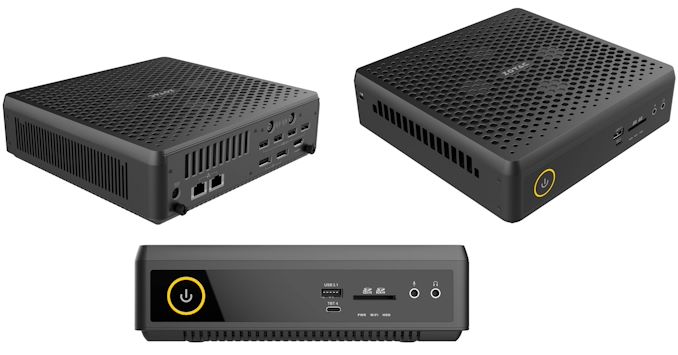
Since the PC uses soldered-down mobile components, it cannot be upgraded (at least not by the end user), but on the bright side, it measures 210 mm × 203 mm × 62.2 mm (8.27 in × 7.99 in × 2.45 in) and it offers quite a lot already from such a compact package.
Just like in case of all Zotac's PCs, Zbox Magnus EN3740C will be available as barebones as well as a complete system with memory, SSD, and Windows installed.
More...
-
08-18-23, 10:52 AM #11853
Anandtech: Intel Cuts Some R&D Positions in California to Reduce Costs
As Intel continues to refocus on its core competencies, the company has been no stranger to shedding business units and jobs in the process. And while the roughly 132,000 headcount company hasn't enacted any massive layoffs, there have been numerous cuts at all levels over the past couple of years, with these layoffs now extending to R&D.
The Sacramento Inno reported this week that Intel is set to lay off 140 employees, including 89 from the Folsom, California campus, and 51 from San Jose. The Folsom cuts span across 37 job classifications, but most prominently impact roles titled 'engineer' and 'architect.' To provide further specifics, the layoffs include 10 GPU software development engineers, eight system software development engineers, six cloud software engineers, six product marketing engineers, and six system-on-chip design engineers.
The reductions are intended to decrease Intel's operational costs and pave a path to renewed profitability. Though it remains surprising that Intel decided to cut workforce at one of its key sites. In the end, Intel's long-term success depends on its R&D prowess and software is as important as hardware in Intel's business.
Intel's Folsom site has historically been pivotal for various research and development endeavors, including SSDs, graphics processors, software, and chipsets. Since Intel sold its 3D NAND and SSD business to SK Hynix in late 2021, engineers working on appropriate products either joined Solidigm, were relayed to other projects, left themselves, or were laid off. The recent layoffs of GPU specialists are somewhat unexpected, given that Intel's long-term plans still have the company developing GPUs for every step of the market, from datacenter accelerators to integrated GPUs.
California is where Intel is headquartered. As of now, Intel employs over 13,000 people in California, which is more than 12,000 in Arizona, but less than 20,000 in Oregon, two major manufacturing sites for the company. As of early 2022, the Folsom site employed 5,300 individuals, but considering these reductions, a total of almost 500 positions have been eliminated from the Folsom R&D campus within this year, following previous layoffs in January, March, and May.
Meanwhile, according to the Inno, in notifying state authorities, Intel has hinted at the possibility of internal relocations for some affected employees.
More...
-
08-21-23, 05:35 PM #11854
Anandtech: SK hynix Begins Sampling HBM3e, Volume Production Planned For H1 2024
SK hynix on Monday announced that it had completed initial development of its first HBM3E memory stacks, and has begun sampling the memory to a customer. The updated ("extended") version of the high bandwidth memory technology is scheduled to begin shipping in volume in the first half of next year, with hardware vendors such as NVIDIA already lining up to incorporate the memory into their HPC-grade compute products.
First revealed by SK hynix back at the end of May, HBM3E is an updated version of HBM3 that is designed to clock higher than current HBM3, though specific clockspeed targets seem to vary by manufacturer. For SK hynix, as part of today's disclosure the company revealed that their HBM3E memory modules will be able to hit data transfer rates as high as 9 GT/sec, which translates to a peak bandwidth of 1.15 TB/sec for a single memory stack.
Curiously, SK hynix has yet to reveal anything about the planned capacity for their next-gen memory. Previous research from TrendForce projected that SK hynix would mass produce 24 GB HBM3E modules in Q1 2024 (in time to address applications like NVIDIA's GH200 with 144GB of HBM3E memory), boosting capacity over today's 16GB HBM3 stacks. And while this still seems likely (especially with the NV announcement), for now it remains unconfirmed.
Meanwhile, the SK hynix also confirms that its HBM3E stacks are set to use its Advanced Mass Reflow Molded Underfill (MR-RUF) technology to reduce their heat dissipation by 10%. But thermals is not the only benefit MR-RUF can provide. MR-RUF implies the usage of an improved underfill between layers, which improves thermals and reduces thickness of HBM stacks, which allows the construction of 12-Hi HBM stacks that are only as tall as 8-Hi modules. This does not automatically mean that we are dealing with 12-Hi HBM3E stacks here, of course.
At present, SK hynix is the only high volume manufacturer of HBM3 memory, giving the company a very lucrative position, especially with the explosion in demand for NVIDIA's H100 and other accelerators for generative AI. And while the development of HBM3E is meant to help SK hynix keep that lead, they will not be the only memory vendor offering faster HBM next year. Micron also threw their hat into the ring last month, and where those two companies are, Samsung is never too far behind. In fact, all three companies seem to be outpacing JEDEC, the organization that is responsible for standardizing DRAM technologies and various memory interfaces, as that group has still not published finalized specifications for the new memory.
More...
-
08-21-23, 11:56 PM #11855
Anandtech: Arm to Be Public Once More, Files for IPO on Nasdaq
The ongoing saga of ownership of Arm appears to be finally nearing its end, as Arm has announced this afternoon that the company has made its long-awaited filing for an initial public offering (IPO) on the Nasdaq exchange. Share prices and listing dates have not been set as of this time, but Arm has secured the ARM ticker symbol for the new offering.
The SoftBank-owned chip IP designer, whose designs are at the core of virtually every smartphone and countless other embedded computers, has been hanging in a state of limbo since early 2022, when NVIDIA’s acquisition of the company was called off due to regulatory pressure. At the time, SoftBank announced that they would instead take Arm public – a much more challenging and less profitable endeavor – using the last 18 months to prepare for an IPO.
SoftBank originally acquired Arm in 2016 as a growth vehicle for the investment firm, paying roughly $32 billion for the chip designer. The company then began shopping Arm around in 2020 after other SoftBank investments such as WeWork turned sour, and SoftBank looked to shore up its balance sheets. Ultimately, the group found a potential buyer in NVIDIA, who was offering $40 billion for Arm, only for that exchange to never come to pass as regulators deemed Arm too critical of a company to be held by NVIDIA – or presumably any other single tech company, for that matter.
The failure of the NVIDIA acquisition has left Arm in a state of limbo for the past year and a half. While there’s little doubt that SoftBank will be able to find investors on the open market, there’s a good deal more doubt over whether SoftBank would be able to sell any stake in Arm at a profit, given their relatively high 2016 buy-in and the fact that NVIDIA’s top offer was only 25% above that. SoftBank’s plans seemed to have softened in the meantime – the IPO filing indicates that SoftBank will be retaining voting control over Arm, so they’re not divesting themselves of Arm entirely – but the company is still looking to turn a profit on Arm, and IPO timing is an important factor in accomplishing that.
At this point, Arm has not announced how many shares of the company will be sold or at what price, as those details will be determined later. Meanwhile, according to a report from Reuters on Friday, SoftBank re-acquired the outstanding 25% stake of Arm held by its Vision Fund unit in a deal valuing Arm at $64 billion. This is consistent with other reports that SoftBank is aiming for an IPO valuation between $60 billion and $70 billion, far better than NVIDIA’s offer and a well over what the investment firm acquired Arm for in the first place. These reports also claim that SoftBank is courting NVIDIA, Intel, and other tech companies as initial investors, which would result in Arm being partially held by what amounts to a quasi-consortium of tech companies.
A successful IPO should also provide some stability for the engineering side of Arm, though it won’t alleviate investment pressures entirely. As a public company, investors will be pushing Arm to further grow the company and raise revenues – a familiar spot for the previously-public chip designer – but now Arm will be able to develop products without the looming prospect of being sold to another company, and the change in priorities that would come from that. Ultimately, Arm is going to have to find ways to drive growth without making customers flinch from royalty rates, a tricky task given the success of RISC-V MCUs and other alternative processor designs.
More...
-
08-22-23, 11:41 AM #11856
Anandtech: The ASUS ROG Strix Scar 17 (2023) Laptop Review: Mobile Ryzen 9 7945HX3D w
With all the success and esteem that AMD's 3D V-Cache on their desktop CPUs has garnered over the last year, it was only a matter of time before we saw a mobile-ready version hit the retail shelves. Last month AMD announced their first mobile processor using 3D V-Cache, the Zen 4 architecture Ryzen 9 7945HX3D, a 16 core chip with a combined 128 MB of L3 cache across both core complex dies (CCDs). Similar to other dual CCD Ryzen 7000 chips with the 3D V-Cache, such as the Ryzen 9 7950X3D, one of the CCDs comes with a large 96 MB of L3 cache, while the other CCD comes with the standard 32 MB.
Looking to put their best foot forward for this important mobile launch, AMD has sampled us with ASUS ROG Strix Scar 17 (G733PYV), a premium and highly powerful desktop replacement-class (DTR) gaming notebook, and also the sole initial launch system for the new chip. Alongside the new Ryzen chip, the ROG Strix Scar 17 incorporates a 17-inch, 1440p@240Hz IPS display that's driven by NVIDIA's powerful RTX 4090 laptop graphics card, 1TB of PCIe 4.0 x4 M.2 storage, 32 GB of DDR5-4800 memory, and Wi-Fi 6E connectivity. The ASUS ROG Strix Scar 17 is a premium example of a DTR gaming laptop, and an understandable launch platform to showcase AMD's Ryzen 9 7945HX3D processor to the market.
Designed as a complete desktop replacement for gamers looking for a little more flexibility in where they can game, the ASUS ROG Strix Scar 17 is a premium example and an understandable launch platform to showcase AMD's Ryzen 9 7945HX3D processor to the market. We're taking a closer look at the AMD Ryzen 9 7945HX3D with all the benefits of the 96 MB of 3D V-Cache on one of the CCDs and how it performs within ASUS's flagship ROG Scar 17 gaming notebook.
More...
-
08-22-23, 05:34 PM #11857
Anandtech: Synopsys Surpasses $500M/Year in AI Chip Revenue, Expects Further Rapid Gr
Demand for generative artificial intelligence (AI) applications is so high that NVIDIA's high-performance compute GPUs like A100 and H100 are reportedly sold out for quarters to come. Dozens of companies are developing AI-oriented processors these days and, like the gold rushes of old, the tool suppliers are some of the biggest winners. As part of their Q3 earnings report, Synopsys, one of the leading suppliers of electronic design automation (EDA) tools and chip IP, disclosed that it's already booked over half of a billion of dollars in AI-related revenue in the last year.
"AI chips are a core value stream for Synopsys, already accounting on a trailing 12-month basis for well over $0.5 billion," said Aart J. de Geus, the outgoing chief executive of Synopsys, at the conference call with analysts and investors (via SeekingAlpha). "We see this growth continuing throughout the decade."
Rising demand for diverse generative AI applications is propelling the AI server market's growth, going from $30 billion in 2023 to an impressive $150 billion by 2027, according to the head of Foxconn. The market for AI processors is poised to expand at a similar pace, and Synopsys is projecting it to exceed $100 billion by 2030.
"Use cases for AI are proliferating rapidly, as are the number of companies designing AI chips," said de Geus. "Novel architectures are multiplying, stimulated by vertical markets, all wanting solutions optimized for their specific application. Third parties estimate that today's $20 billion to $30 billion market for AI chips will exceed $100 billion by 2030."
AI processors are set to become a sizable part of the semiconductor market in general. In fact, sales of AI chips may account for 10% of the whole semiconductor market several years down the road. Furthermore, they will be a major driver for the semiconductor market growth as they will enable new types of applications, such as self-driving vehicles.
"In this new era of 'smart everything,' these chips in turn drive growth in surrounding semiconductors for storage, connectivity, sensing, AtoD and DtoA converter, power management," said the head of Synopsys. "Growth predictions for the entire semi market to pass $1 trillion by 2030 are thus quite credible."
Perhaps the most amusing part about Synopsys earning over $500 million on AI chips in about a year is that a significant part of the company's revenue comes from AI-enabled EDA tools. Essentially, the company is selling EDA software that uses artificial intelligence to develop artificial intelligence chips.
Sources: Synopsys, SeekingAlpha.
More...
-
08-23-23, 08:38 PM #11858
Anandtech: NVIDIA Reports Q2 FY2024 Earnings: $13B Revenue Blows Past Records On Absu
NVIDIA this afternoon has announced their results for the second quarter of their 2024 fiscal year, delivering what’s arguably the most anticipated earnings report of the season. Riding high on unprecedented demand for their data center-class GPUs for use in AI systems, NVIDIA’s revenues have been on a rapid rise – as well as their standing on Wall Street.
For the second quarter of their 2024 fiscal year, NVIDIA booked $13.5 billion in revenue, which is a 101% increase over the year-ago quarter. The company has, at this point, shaken off the broader slump in technology spending on the back of an explosion in demand for their data center products, and to a lesser extent the latest generation of their consumer GeForce graphics products. As a result, this is a quarter for the record books, as NVIDIA has set new records for everything from revenue to net income.
Driven by their highly profitable, high-margin data center products, NVIDIA achieved a GAAP gross margin of 70.1% for the quarter. Coupled with their record revenue, this has resulted in NVIDIA booking a blistering $6.1B in net income, an 843% improvement over Q2’22, and even more than trebling their net income versus just the previous quarter.NVIDIA Q2 FY2024 Financial Results (GAAP) Q2 FY2024 Q1 FY2024 Q2 FY2023 Q/Q Y/Y Revenue $13.5B $7.2B $6.7B +88% +101% Gross Margin 70.1% 64.6% 43.5% +5.5ppt +26.6ppt Operating Income $6.8B $2.1B $499M +218% +1263% Net Income $6.1B $2.0B $656M +203% +843% EPS $2.48 $0.82 $0.26 +202% +854%
And while high margins are not unheard of for fabless semiconductor companies like NVIDIA, it’s all but unheard of for a company of this scale to hit those kinds of margins. In the span of just a year, NVIDIA has gone from earning $6 billion a quarter in revenue to keeping $6 billion in revenue as profits. Suffice it to say, it’s very good to be NVIDIA right now – or at least, it’s good to be working in NVIDIA’s data center product teams right now.
Things seem set to continue going NVIDIA’s way, as well. The company, handily beating their already very bullish $11B revenue projection for Q2, is projecting a further 18%+ jump in revenue for Q3, to $16B in revenue. Which, if NVIDIA’s projections pan out, would afford a 71.5% GAAP gross margin. This would set a new round of records for NVIDIA, who in just the last quarter became a trillion-dollar market capitalization company, and as of this moment is already knocking on $1.3 trillion in after-hours trading. But with lofty projections will also come lofty expectations to perform, and to maintain that kind of performance for more than a handful of quarters.
NVIDIA Market Segment ResultsDiving into the performance of NVIDIA’s individual market segments, the bellwether of NVIDIA’s product portfolio remains their data center segment. That segment posted $10.3B in revenue for Q2, not just setting a new segment record, but smashing the old record in the process.NVIDIA Market Platform Results, Q2 FY2024 (GAAP) Q2 FY2024 Q1 FY2024 Q2 FY2023 Q/Q Y/Y Data Center $10,323M $4,284M $3,806M +141% +171% Gaming $2,486M $2,240M $2,042M +11% +21% Professional Visualization $379M $295M $496M +28% -24% Automotive $253M $296M $220M -15% +15% OEM & IP $66M $77M $140M -14% -53%
NVIDIA’s data center segment has grown by leaps and bounds over the past year in particular, on the back of developments with large language models (LLMs) in the AI space, and the subsequent spike in demand for high-performance processors that can train and run those models. According to the company, the bulk of this additional demand has come from a mix of cloud service providers and consumer internet companies, with data center compute product revenue growing by 195% year-over-year. At this point NVIDIA is full speed ahead with the production of Hopper architecture (GH100) based products, and if a report from the Financial Times is correct, the company is now looking to triple its GH100 production, in anticipation of shipping over 1.5M units in 2024.
The jump in sales in their data center processors has also spurred on similar growth in NVIDIA’s other data center product segments as well. Networking revenue for the company was up 94% year-over-year, as customers have been buying up increasing amounts of InfiniBand hardware to wire up their GPU installations. Unfortunately, NVIDIA doesn’t provide a further breakdown here of how much of this increase is in the form of bundled sales – customers buying DGX SuperPods and other NVIDIA products that come with InfiniBand hardware installed – and how much of that is ad-hoc networking equipment sales. But either way the success of NVIDIA’s data center GPUs is good news for their networking division.
But NVIDIA’s success in the data center compute market also means that the company’s overall revenues have become increasingly imbalanced. In the last couple of years NVIDIA has gone from being primarily a gaming company to primarily a compute company to almost entirely a compute company. NVIDIA’s compute and networking segment sales – one of NVIDIA’s two canonical reporting segments – now make up 77% of their overall revenue, and the disparity is increasing. So while NVIDIA is doing well on the whole, the lopsided success driven by the generative AI market means that they are, at least for the moment, not very well diversified with regards to revenue.
Speaking of things that aren’t data center GPUs, NVIDIA’s gaming market segment recorded $2.5B in revenue for Q2. This is up a “mere” 22% versus the year-ago quarter, coming on the back of the launch of NVIDIA’s GeForce RTX 40 series products. Now that the company has finished releasing the full product stacks for both mobile and desktop, the company is enjoying a surge in sales as gamers are picking up the new hardware, and retailers have largely finished selling off old GeForce RTX 30 stock.
And while NVIDIA’s gaming revenue pales in comparison to the data center, this is otherwise a good quarter for that market segment. While it does not end up being anything near a record due to the most recent cryptocurrency rush blowing up NVIDIA’s gaming revenues a couple of years back, excluding those quarters, this would be one of NVIDIA’s best quarters for the gaming segment on a revenue basis. Diving a bit into NVIDIA’s historical data, gaming sales have grown by about $1.2B in the last 4 years, falling just short of doubling NVIDIA’s revenues there. Though it goes without saying that gamers are less enthused about the current state of video card prices that are allowing NVIDIA to afford such revenue growth.
Moving down the list, NVIDIA’s professional visualization segment finds itself in a weaker spot. The ramp of Ada Lovelace architecture workstation products has helped, especially in quarterly revenue, but at $379M in revenue, year-over-year revenue is down 24%. The professional visualization market has seemingly reached its saturation point, and while revenue ebbs and flows from one quarter to the next, NVIDIA has not been able to grow it significantly over the past several years.
The automotive segment, meanwhile, is NVIDIA’s final market segment to show growth for the quarter. That segment booked $253M in revenue for Q2, up 15% from the year-ago quarter. According to NVIDIA, the bump in revenue was primarily driven by sales of self-driving platforms, tapered by lower overall car sales (particularly in China).
Finally, NVIDIA’s OEM & Other segment was another that saw significant declines, dropping 53% to $66M. The company hasn’t offered any further details with this quarter’s financial results release, but in the previous quarter the drop was attributed to declines in GeForce MX GPU sales.
Looking Forward: To $16B Of Revenue In Q3
Given the rapid tear NVIDIA has been on in growing its revenues and profitability over the past year, half of the anticipation with recent NVIDIA earnings releases has not just been how well they’ve performed, but how well they expect to perform in the future. And at least for the next quarter, NVIDIA is projecting another set of record results.
For the third quarter of their 2024 fiscal year, NVIDIA is projecting $16 billion (plus or minus 2%) in revenue. That would be a 169% year-over-year jump in total revenue for the company, eclipsing the 101% growth of Q2. So long as NVIDIA’s data center sales remain high, the company seems set to remain on a growth spurt through the rest of the year, as Q2 is the first quarter where NVIDIA has been shipping Hopper architecture products in large volumes – meaning that Q2 is essentially the start of the Hopper architecture era from and NVIDIA sales perspective. And should NVIDIA beat their own projections by more than a fraction, then the company will book more revenue in Q3’24 than they did in all of FY2021.
The further expected growth in data center sales is also expected to push NVIDIA’s gross margins higher as well. The company is projecting a GAAP gross margin of 71.5% for the third quarter, beating Q2’s already impressive figures.
As for what NVIDIA is doing with their newfound riches, where they aren’t already investing more into data center GPU production to try to catch up with demand, NVIDIA is sinking their cash into stock buybacks. Already in the midst of a share repurchase program with $3.95 billion left, this week the company’s board of directors has authorized NVIDIA to buy back an additional $25 billion in shares.
Besides bringing NVIDIA slightly more private by removing outstanding shares, this is almost certain to further boost NVIDIA’s stock price, which like the company itself, has been on a tear this year. At the time of their Q1 earnings report, NVIDIA’s stock was hovering around $307 a share, for a market cap of around $755 billion. Now the price is at $471, and in after-hours trading it’s jumped a further 7% to $505 on the back of NVIDIA beating the street on their earnings report. As a result, NVIDIA is closing in on a market capitalization of $1.3 trillion, almost 4x the valuation of rivals AMD and Intel combined.
For the moment, at least, it would seem the sky’s the limit for data center GPU sales. NVIDIA is already unable to keep up with demand for Hopper products, and that won’t be changing in the near future. So, for as long as they can last for NVIDIA, let the good times roll.
More...
-
08-24-23, 04:49 PM #11859
Anandtech: Sony Unveils The PlayStation Portal: A Remote Play Handheld For PlayStatio
For all of their ups and downs in the handheld game console space over the years, one of Sony's bigger successes has been their local game streaming support, better known as Remote Play. Allowing the PS3 and PS4/PS5 consoles to be remotely played on the Playstation Portable and PS Vita respectively, it's been a defining feature of Sony's consoles for the past decade and a half. And while Sony is no longer making dedicated gaming handhelds, the company is still eager to leverage their remote play capabilities to provide new experiences and sell new hardware. To that end, this week Sony unveiled their dedicated remote play companion device for the PS5.
The PlayStation Portal is designed to enable portable gaming experiences for PlayStation 5 owners. It comes equipped with an eight-inch, 1080p LCD display, with remote play able to stream games at up to 60fps. While the PlayStation Portal is a device that has its own system-on-chip that runs its operating system and connects to the Internet using Wi-Fi, the Portal is not designed to run games on its own and can only enable remote play on a PlayStation 5 using Wi-Fi.
Designed to extend the PS5 experience as much as reasonably possible, the PlayStation Portal comes with controllers that closely resemble the design and functionality PS5's DualSense controllers. These built-in controllers provide gamers with familiar haptic feedback and adaptive triggers, ensuring a consistent gaming experience. Additionally, the device has the PlayStation 5's home screen, offering a dedicated section for media playback.
Avid readers will certainly ask about latency since the Portal is a remote gaming devices. A review from IGN has demonstrated the device's minimal latency during gameplay.
Meanwhile, the PlayStation Portal will not be compatible with Sony's anticipated cloud streaming service for PS5 titles, according to The Verge. This means that the handheld is only able to stream games already installed on a user's PS5 console, and from no where else.
Despite the overall simplicity of the device, Sony has also made a notably odd choice with regards to audio capabilities. In short, the handheld device lacks Bluetooth audio support. Instead, Sony is using the Portal to introduce its proprietary PlayStation Link wireless technology, which promises to deliver lossless, lag-free audio. As a result, the handheld is not compatible with existing wireless headsets from Apple, Beats, Samsung, and even Sony itself. in order to get wireless audio out of the Portal, gamers will have to use Sony's new wireless headphones and earbuds, which are being released alongside the handheld and will be the first audio devices with PlayStation Link support. Thankfully, for those who prefer wired audio, the device also includes a 3.5mm headphone jack.
While many details about the PlayStation Portal have been shared, Sony still hasn't disclosed some specifications, such as the expected battery life. However, indications suggest that Sony is aiming for a battery duration comparable to its DualSense controller, which is around seven to nine hours, according to Cnet. At any rate, Sony has left itself plenty of time to work out these details; for the moment, the device lacks a public launch date, with Sony saying the Portal will be released "later this year."
More...
-
08-24-23, 04:49 PM #11860
Anandtech: Samsung Launches 57-Inch Odyssey Neo G9: An Ultimate Curved Gaming LCD
Samsung has begun taking pre-orders for its new curved 57-inch Odyssey Neo G9 gaming monitor, with the aim of raising the bar for ultrawide gaming displays. Dubbing the 57-incher the "world's first dual UHD gaming monitor," the 7,680 x 2,160 LCD display is designed to be as wide as two typical 32-inch 4K displays.
First unveiled back at CES 2023, the Samsung Odyssey Neo G9 model G95NC is based upon a unique VA LCD panel featuring a 1000R curvature, a 7,680 × 2,160 pixels resolution, and a 32:9 aspect ratio. The panel supports a variable refresh rate of up to 240 Hz with AMD's FreeSync Premium Pro on top and a 1 ms GtG response time.
To improve color reproduction and contrasts, the display features Samsung's Quantum Mini LED lighting, which uses Mini LED-based backlighting for better contrasts (though the company does not disclose the number of dimming zones it uses for the monitor). Meanwhile quantum dots are being used to widen the gamut of the backlight, reaching 95% of the DCI color space. Samsung claims the display offers DisplayHDR 1000 compliance – indicating a peak luminance of 1000 nits in HDR mode and support for at least HDR10 format.
To ensure that the display runs at its full resolution of 7,680 × 2,160 with an up to 240 Hz refresh rate, Samsung's Odyssey Neo G9 must be connected to its host using either DisplayPort 2.1 with UHBR 13.5 (which is currently only available on AMD's Radeon RX 7900-series graphics cards) or HDMI 2.1 with in FRL 12 mode (with DSC). In addition to display inputs, the unit has a USB hub.
The monitor supports capabilities like picture-in-picture and picture-by-picture, so it can be used with multiple PCs at once. An interesting feature the product supports is Auto Source Switch+, which allows to instantly connect to new devices without flipping through input sources.
While the 57-inch ultrawide Samsung Odyssey Neo G9 is very impressive, there are people who might prefer something more classic. For them, Samsung has its new curved 4K 55-inch Odyssey Ark (G97NC) with a 165 Hz maximum refresh rate and AMD's FreeSync Premium Pro badge.
Samsung says that both Odyssey Neo G9 57-inch and Odyssey Ark 55-inch displays are now available for preorder worldwide. Thus far pre-orders have opened up in the UK and Australia, among other regions, however Samsung has yet to list the monitor on its US website.
More...
Thread Information
Users Browsing this Thread
There are currently 19 users browsing this thread. (0 members and 19 guests)





 Quote
Quote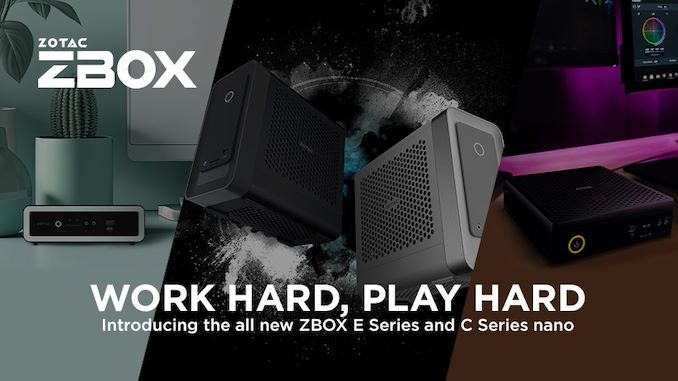
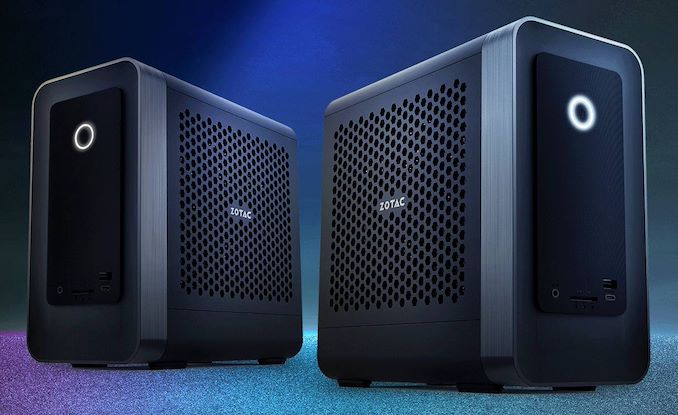
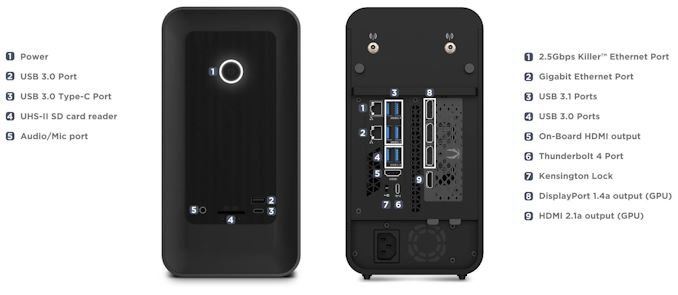
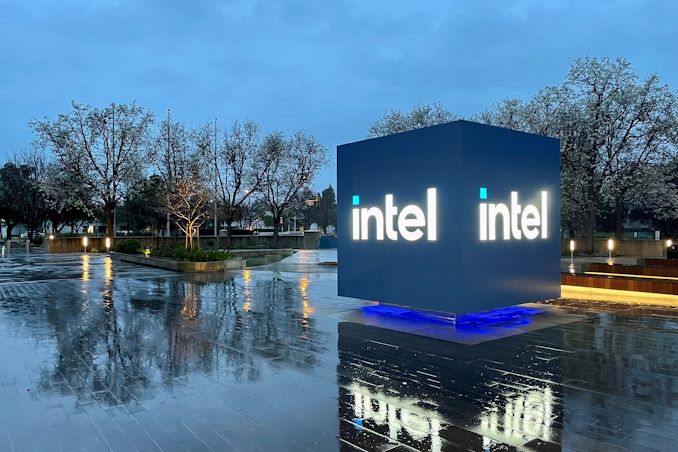
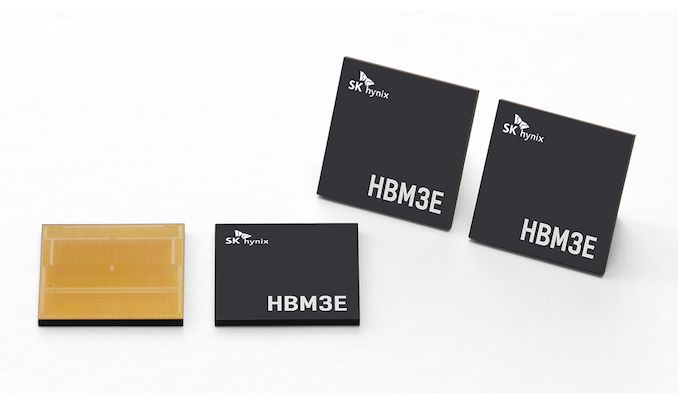
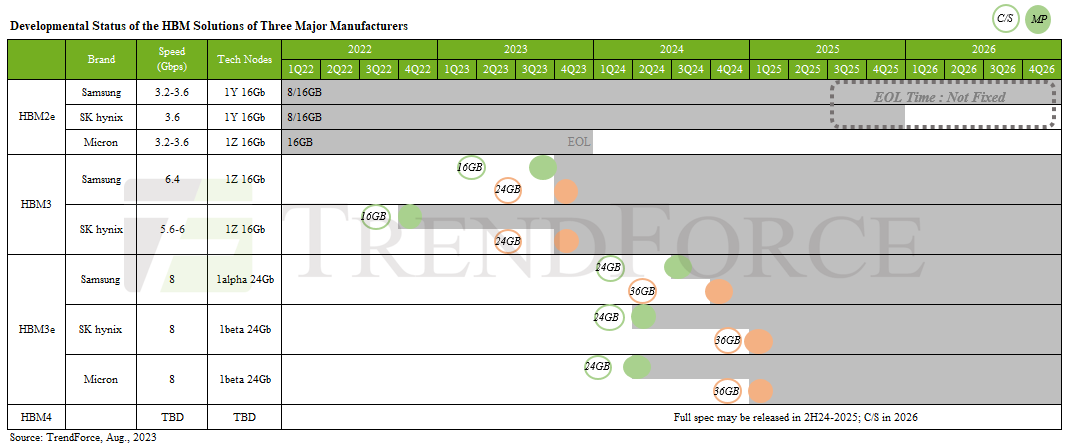



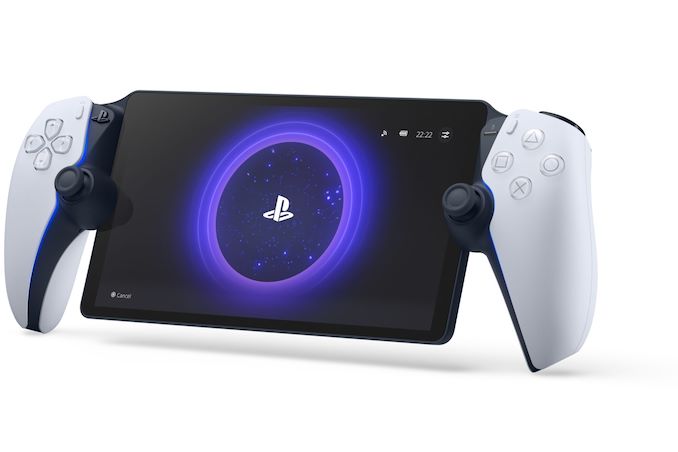

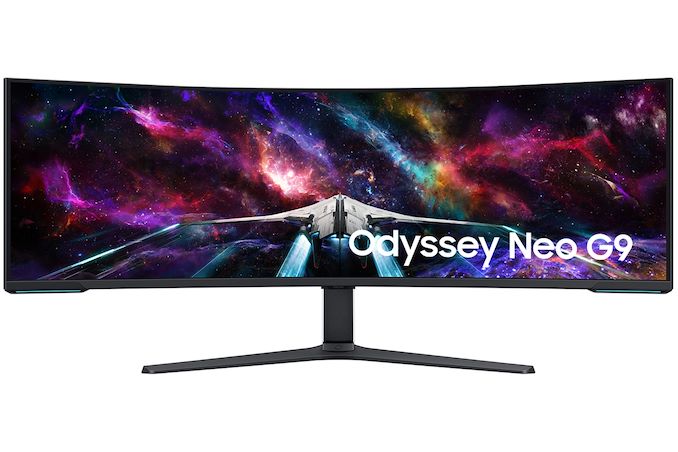
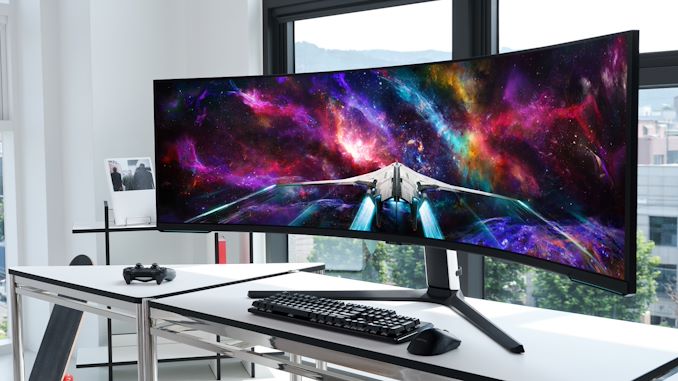
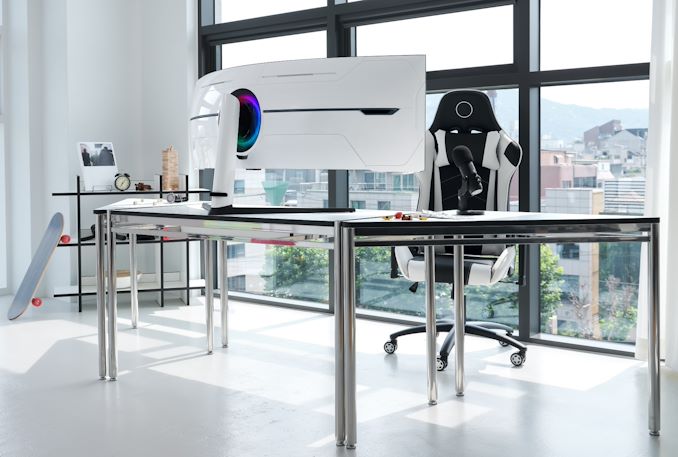
















Bookmarks